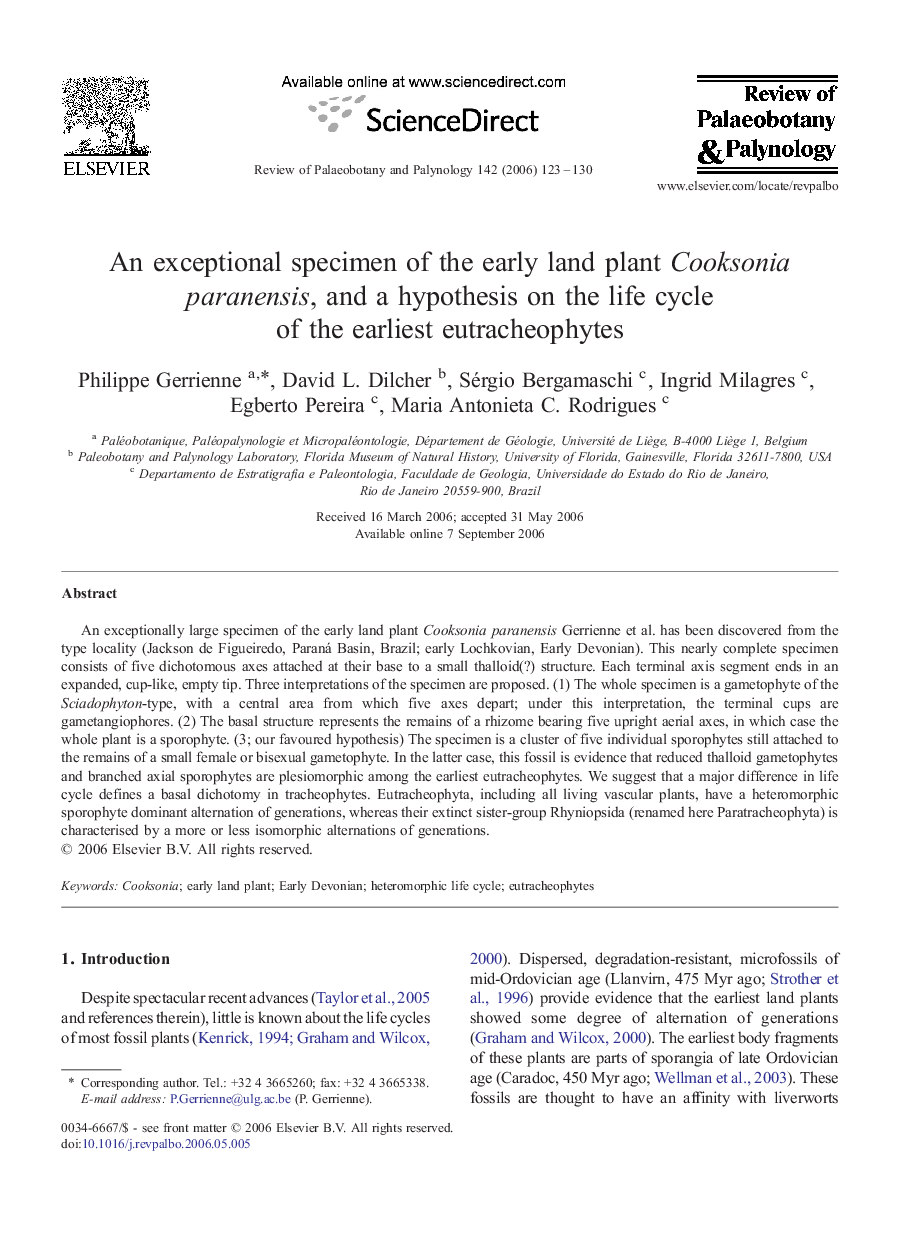| کد مقاله | کد نشریه | سال انتشار | مقاله انگلیسی | نسخه تمام متن |
|---|---|---|---|---|
| 4751196 | 1642578 | 2006 | 8 صفحه PDF | دانلود رایگان |

An exceptionally large specimen of the early land plant Cooksonia paranensis Gerrienne et al. has been discovered from the type locality (Jackson de Figueiredo, Paraná Basin, Brazil; early Lochkovian, Early Devonian). This nearly complete specimen consists of five dichotomous axes attached at their base to a small thalloid(?) structure. Each terminal axis segment ends in an expanded, cup-like, empty tip. Three interpretations of the specimen are proposed. (1) The whole specimen is a gametophyte of the Sciadophyton-type, with a central area from which five axes depart; under this interpretation, the terminal cups are gametangiophores. (2) The basal structure represents the remains of a rhizome bearing five upright aerial axes, in which case the whole plant is a sporophyte. (3; our favoured hypothesis) The specimen is a cluster of five individual sporophytes still attached to the remains of a small female or bisexual gametophyte. In the latter case, this fossil is evidence that reduced thalloid gametophytes and branched axial sporophytes are plesiomorphic among the earliest eutracheophytes. We suggest that a major difference in life cycle defines a basal dichotomy in tracheophytes. Eutracheophyta, including all living vascular plants, have a heteromorphic sporophyte dominant alternation of generations, whereas their extinct sister-group Rhyniopsida (renamed here Paratracheophyta) is characterised by a more or less isomorphic alternations of generations.
Journal: Review of Palaeobotany and Palynology - Volume 142, Issues 3–4, December 2006, Pages 123–130